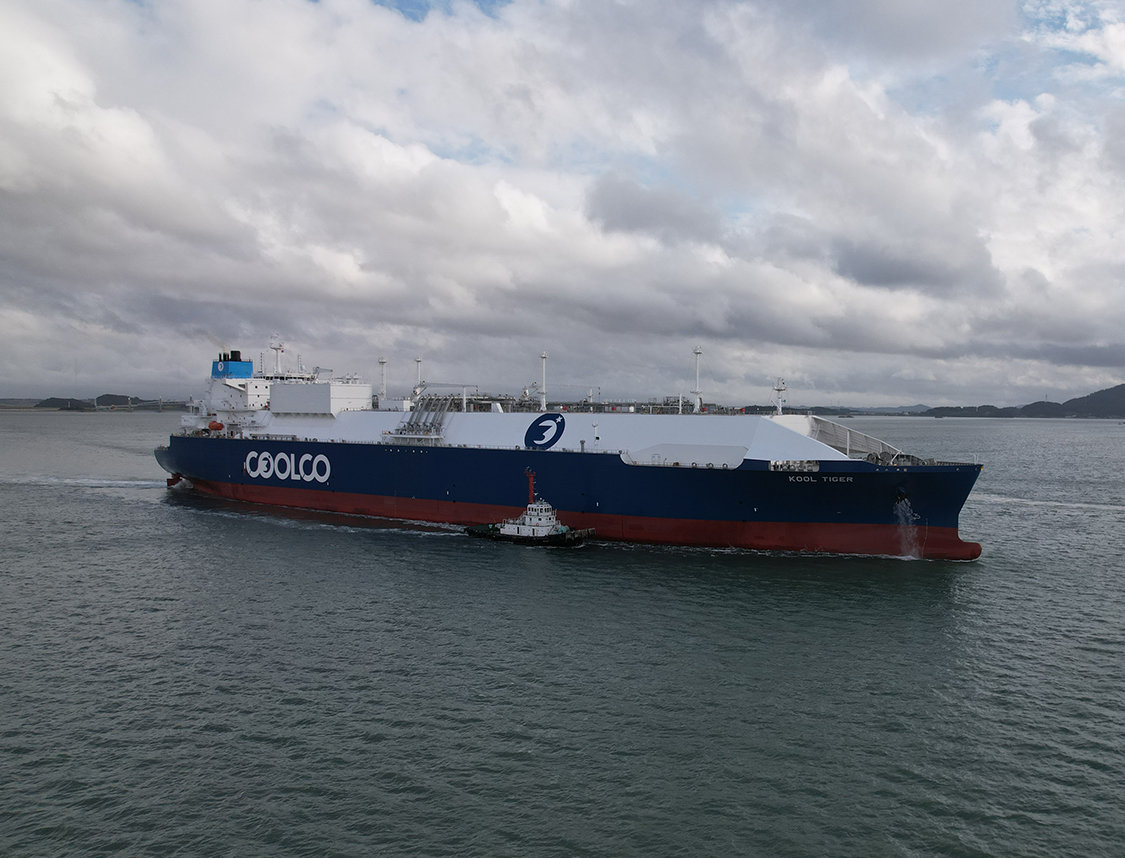This story requires a subscription
This includes a single user license.
In August, Coolco said it plans to employ its first newbuild LNG vessel, Kool Tiger, on a shorter deal this winter as it works to secure a long-term charter deal from 2025.
CoolCo has seven TFDE LNG carriers it acquired from Golar LNG and the four LNG carriers it purchased from its largest shareholder Eastern Pacific Shipping.
Besides these vessels, CoolCo purchased two newbuild LNG carriers from EPS, and they feature GTT’s Mark III Flex membrane cargo tank system, reliquification, air-lubrication, and shaft generators.
The shipping firm exercised its option with affiliates of EPS Ventures in June 2023 to acquire newbuild contracts for the two 2-stroke LNG carriers scheduled to deliver in the fourth quarter of 2024.
In May, CoolCo entered into a 14-year charter deal with India’s largest gas utility GAIL for one of the newbuild LNG carriers currently under construction in South Korea.
CoolCo will deliver Kool Panther to state-owned GAIL in the Gulf of Mexico.
The company said on Thursday it took delivery of the first vessel, Kool Tiger, during the third quarter.
“She was delivered from the shipyard in October and repositioned to the Atlantic Basin for spot market employment on an interim basis, while pursuing a long-term charter,” CoolCo said.
Chartering activity subdued
CoolCo said in the report that chartering activity in the third quarter was subdued and this has extended beyond the end of the quarter.
Moreover, CoolCo said long-term charterers have responded by pushing out their requirements in the expectation that nearer-term cargoes can be transported with vessels from the spot market.
The LNG shipping firm said it has chartered its one TFDE vessel available in the fourth quarter on a spot voyage and anticipates continuing with similar employment until the vessel enters drydock in early February.
This vessel will be upgraded with LNGe specifications and is scheduled to be in the yard for approximately 50 days, according to CoolCo.
These upgrades include a high-capacity sub-cooler retrofit, a passive air lubrication system, and various smaller performance enhancements.
Drydocks
CoolCo said its fleet maintained “strong” performance, achieving 98 percent fleet utilization in the third quarter, the same level as in the prior quarter.
The minor off-hire period was due to the repositioning of a vessel between charters.
CoolCo said both Kool Frost and Kool Ice completed their drydocks ahead of schedule in the third quarter, with average costs in line with estimates at approximately $5 million per vessel.
Additionally, Kool Husky entered drydock during September which was completed along with upgrades for LNGe specifications ahead of schedule in October, it said.
Results
CoolCo generated total operating revenues of $82.4 million in the third quarter, compared to $83.4 million for the second quarter of 2024, due to three vessels undergoing scheduled drydocking during the quarter,
The firm reported net income of $8.11 million, compared to $26.51 million in the prior quarter with the decrease primarily related to a loss in CollCo’s mark-to-market interest rate swaps.
CoolCo said it achieved average time charter equivalent earnings (TCE) of $81,600 per day for the third quarter, compared to $78,400 per day in the prior quarter, primarily due to contribution from one vessel that recently started a higher rate charter.
Adjusted Ebitda reached $53.7 million, compared to $55.7 million in the prior quarter.
CoolCo declared a quarterly dividend of $0.15 per share, payable to shareholders of record on December 2, 2024.
Q4 impact
CEO Richard Tyrrell said the company’s contracted fleet and efficient dry-docking enabled CoolCo to reach the upper end of TCE guidance for the third quarter, despite a soft market backdrop that is expected to impact the company in the fourth quarter.
“While we work to secure their long-term employment, the newly delivered Kool Tiger and the available Kool Glacier are currently subject to weaker rates in the short-term market,” he said.
“However, by design, our backlog from our remaining 10 vessels and one newbuild vessel, set for delivery in January, limits our exposure,” he said.
Tyler said this winter’s market is expected to be impacted by “unfavorable” short-term trading dynamics and the delivery of orderbook vessels in the fourth quarter ahead of the new LNG supply they are intended to serve.
He said LNG prices for immediate delivery have remained high, encouraging prompt delivery rather than the contango-driven floating storage that is customary at the onset of winter.
Additionally, high prices in Europe have closed the EastWest arbitrage that would result in a greater number of cargoes shipping to the distant East.
“While these trading dynamics could quickly reverse, we nevertheless expect vessels delivered ahead of their intended liquefaction projects to be absorbed in stages throughout 2025 as those projects and their associated LNG volumes come online,” Tyrrell said.
“If the current market has a silver lining, it is the knocking out of the steam-turbine vessels from the fleet,” he said.
“These are falling off charter at a rate of 20-30 per year (in addition to the 92 that have already reached this age), not being extended, and exiting the active market in a way that cannot be easily reversed,” Tyrrell said.
Growth opportunities
According to Tyrrell, longer-term LNG “remains the transition fuel of choice with well-established geopolitical credentials that are highly supportive of future development.”
“It is expected that the moratorium on new LNG export projects in the US will soon be relaxed, resulting in material additional shipping demand towards the end of this decade,” he said.
“CoolCo anticipates that current market conditions will provide growth opportunities, which it intends to seize from a position of strength,” Tyrrell said.
CoolCo is in the process of refinancing its $570 million bank facility into a reducing revolving credit facility, further increasing its liquidity by approximately $120 million while lowering the margin and extending the maturity from early 2027 to late 2029, with options for two one-year extensions.
“After the transaction closes, our nearest debt maturity will come due in 4.5 years,” Tyrrell said.

